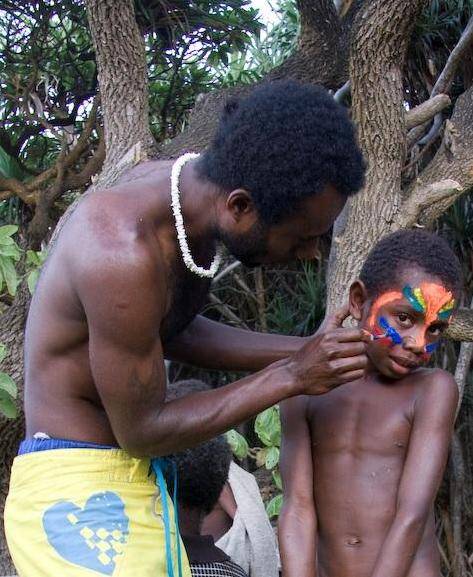
Figure 1.--This photo was taken in a village on the island of Tanna in Vanuatu. The boy is being body-painted for the post-circumcision festival. |

|
Vanuatu is located east of northern Austrlia and south of the Solomons. The islands were settled by melanesian people sailing south from the Solomon Islands and Papua New Guinea (about 1500 BC). The first Europeans to site the islands was Portuguese navigator Pedro Fernandes de Queiros (1606). The waters around the islands were visited by British explorer James Cook (1774). He named the archipelago the vNew Hebrides because they reminded him of Scottish islands. Missinaries arrived (19th centurt). The islands were unclaimed by Europeans until the 20th century. The British and French agreed to a condominium government (1906). There were both British and French settlers with the French predominating. The New Hebredes during World War II were just beyond the range of Japanese invasion. The American naval victory at Midway made it impossiblle for the Japanese to move further south than the Solomons. The New Hebredes became an important supply and stagiung area for the Allied South Pacific offesive in Guadacanal and the rest of the Solomons. Major naval engagements were fought just north of the islands. An independence movement gained strength in te pot-Wr ea (1970s). The islands became independent as the Republic of Vanuatu (1980). The population is largely rural, although Port Vila and Luganville have grown in population. The Vanuatu population (Ni-Vanuatu) are mostly Melanesian with a few Europeans, Asians and other Pacific islanders. We do not yet have a page on activities on Vanuatu, but we do have a schools page.
Vanuatu is located east of northern Austrlia near New Caledonia and south of the Solomons. The archipelgo is a Y-shaped chain. There are 4 main islands and 80 smaller islands. many quite small. Aabout 65 of the various island are inhabited. The islands are mostly moutenous as they are volcanic in origins. Several of the islands have active volcanoes. There are narrow coastal plains. Naturaln resources include manganese, hardwood forests, and offshore fishery stocks. Much of the Islands aee still civered by undeveloped tropical firrest. The population is still largely rural, although Port Vila and Luganville have grown in population. The climate is tropical, partially moderated by southeast trade winds (May to October). There is moderate rainfall (November to April). Cyclones may strike or pass near the islands (December to April).
The Vanuatu islands were settled by melanesian people sailing south from the Solomon Islands and Papua New Guinea (about 1500 BC). The first Europeans to site the islands was Portuguese navigator Pedro Fernandes de Queiros (1606). The waters around the islands were visited by British explorer James Cook (1774). He named the archipelago the vNew Hebrides because they reminded him of Scottish islands. Missinaries arrived (19th century). The islands were unclaimed by Europeans until the 20th century. The British and French agreed to a condominium government (1906). There were both British and French settlers with the French predominating. Geography meant that the New Heberdes played a role in the World war II Pacific war. The Islands were just beyond the range of the Japanese offensive after Pearl Harbor. The American naval victory at Midway made it impossible for the Japanese to move further south than the Solomons. The New Hebredes became an important supply and staging area for the Allied South Pacific offesive in Guadalcanal and the rest of the Solomons. Major naval engagements were fought just north of the islands. An independence movement gained strength in the post-War era (1970s). The islands became independent as the Republic of Vanuatu (1980).
The Vanuatu population (Ni-Vanuatu) are mostly Melanesian with a few Europeans, Asians and other Pacific islanders.
We do not yet have a page on activities on Vanuatu, but we do have a schools page.
Navigate the Boys' Historical Clothing Web Site:
[Return to the Main Oceania page]
[Return to the Main countries page]
[Introduction]
[Activities]
[Biographies]
[Chronology]
[Cloth and textiles]
[Clothing styles]
[Countries]
[Topics]
[Bibliographies]
[Contributions]
[FAQs]
[Glossaries]
[Images]
[Images]
[Links]
[Registration]
[Tools]
[Boys' Clothing Home]
